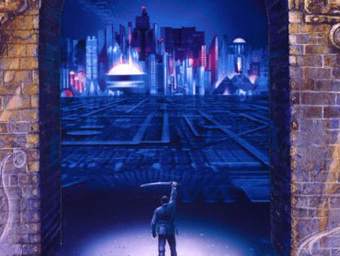Valve developer Michael Abrash has confirmed that he is working on a “wearable computing” project where both computer-generated graphics and the real world are seamlessly overlaid.
“There is no separate display that you hold in your hands – think Terminator vision,” Abrash explained in an official blog post.

According to Abrash, the underlying trend in computing has moved from desktops, to laptops/notebooks, and finally, to tablets. As such, Valve believes the logical endpoint is computing everywhere, all the time, in the form of wearable devices.
“I have no doubt that 20 years from now that will be standard, probably through glasses or contacts, but for all I know through some kind of more direct neural connection,” said Abrash.
“And I’m pretty confident that platform shift will happen a lot sooner than 20 years – almost certainly within 10, but quite likely as little as 3-5, because the key areas – input, processing/power/size, and output – that need to evolve to enable wearable computing are shaping up nicely, although there’s a lot still to be figured out.”
However, the developer emphasized that hardware is only as useful as the software running on it. Meaning, there is a vast web of intertwined issues and practical questions that must be resolved before the combined hardware-software system could become a viable reality.
“[For example], what does a wearable UI look like, and how does it interact with wearable input? How does the computer know where you are and what you’re looking at? When the human visual system sees two superimposed views, one real and one virtual, what will it accept and what will it reject? To what extent is augmented reality useful – and if it’s useful, to what extent is it affordably implementable in the near future?
“And much, much more – there are deep, worthy challenges everywhere you look (and I hope to be posting about some of them soon); in fact, what it reminds me of, but on a larger scale, is Quake, where we had to figure out 3D graphics, client-server Internet networking, file formats, pretty much everything from scratch. Indeed, I think this has the potential to be, like Quake, a technological inflection point after which everything has changed.”
Abrash also noted that the technology, if properly implemented, would be a big step in the direction of Snow Crash, a popular cyberpunk novel penned by Neal Stephenson. Yet, the engineer was also careful to note emphasize that the wearable computing project was still in the R&D stage, and doesn’t involve a project at this point in time.
“So please, no rumors about Steam glasses being announced at E3. It’s an initial investigation into a very interesting and promising space, and falls more under the heading of research than development.
“ The Valve approach is to do experiments and see what we learn – failure is fine, just so long as we can identify failure quickly, learn from it, and move on – and then apply it to the next experiment. The process is very fast-moving and iterative, and we’re just at the start. How far and where the investigation goes depends on what we learn,” he added.






